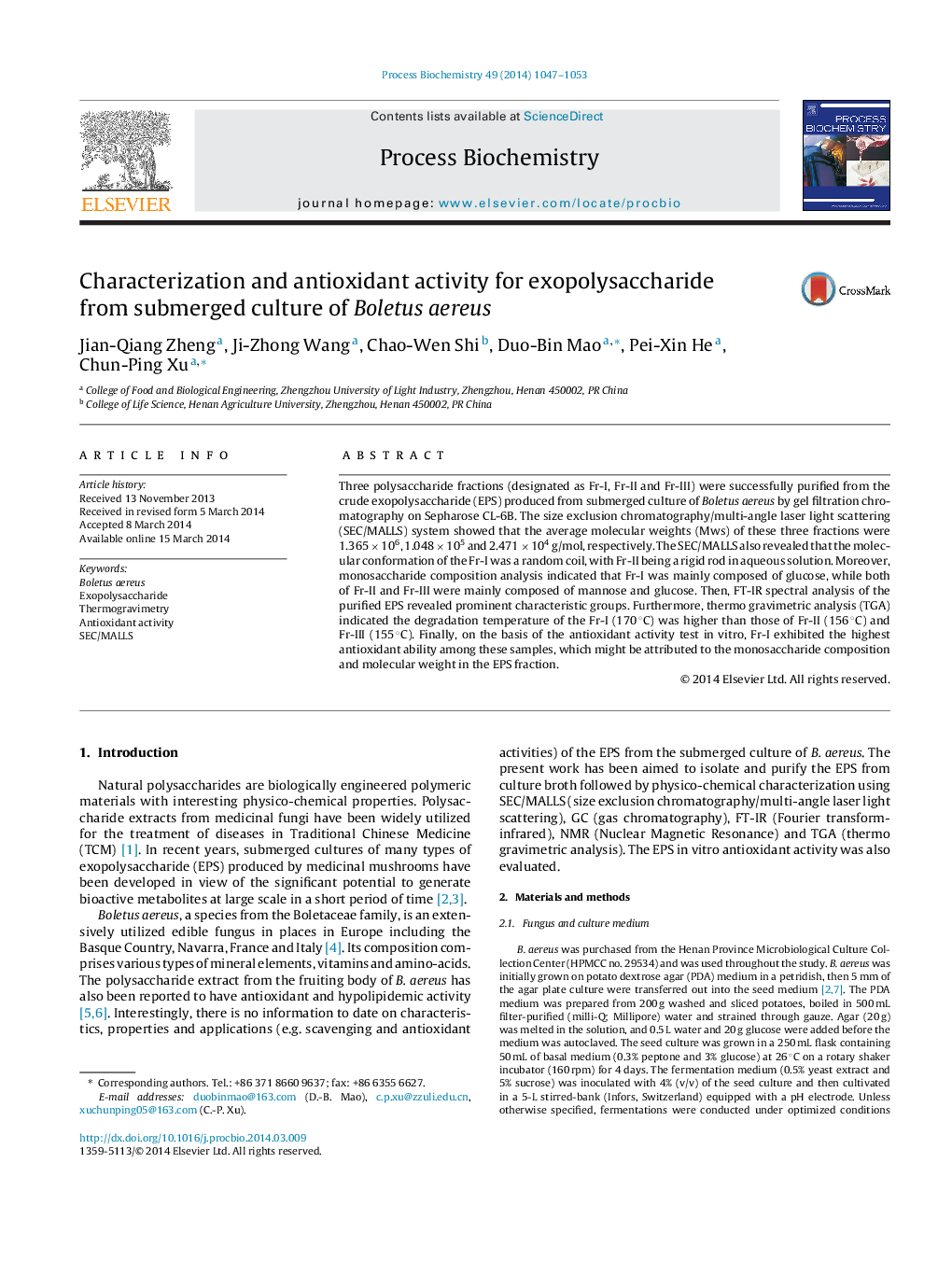| Article ID | Journal | Published Year | Pages | File Type |
|---|---|---|---|---|
| 34383 | Process Biochemistry | 2014 | 7 Pages |
•Three EPS fractions were purified from the exopolysaccharide of B. aereus.•The physico-chemical characterization of EPS fractions was determined.•The thermal stabilities of EPSs are related to their carbohydrate compositions.•The Fr-I showed strongest antioxidant among the three EPS fractions.•The antioxidant abilities of EPSs are related to the carbohydrate compositions.
Three polysaccharide fractions (designated as Fr-I, Fr-II and Fr-III) were successfully purified from the crude exopolysaccharide (EPS) produced from submerged culture of Boletus aereus by gel filtration chromatography on Sepharose CL-6B. The size exclusion chromatography/multi-angle laser light scattering (SEC/MALLS) system showed that the average molecular weights (Mws) of these three fractions were 1.365 × 106, 1.048 × 105 and 2.471 × 104 g/mol, respectively. The SEC/MALLS also revealed that the molecular conformation of the Fr-I was a random coil, with Fr-II being a rigid rod in aqueous solution. Moreover, monosaccharide composition analysis indicated that Fr-I was mainly composed of glucose, while both of Fr-II and Fr-III were mainly composed of mannose and glucose. Then, FT-IR spectral analysis of the purified EPS revealed prominent characteristic groups. Furthermore, thermo gravimetric analysis (TGA) indicated the degradation temperature of the Fr-I (170 °C) was higher than those of Fr-II (156 °C) and Fr-III (155 °C). Finally, on the basis of the antioxidant activity test in vitro, Fr-I exhibited the highest antioxidant ability among these samples, which might be attributed to the monosaccharide composition and molecular weight in the EPS fraction.
